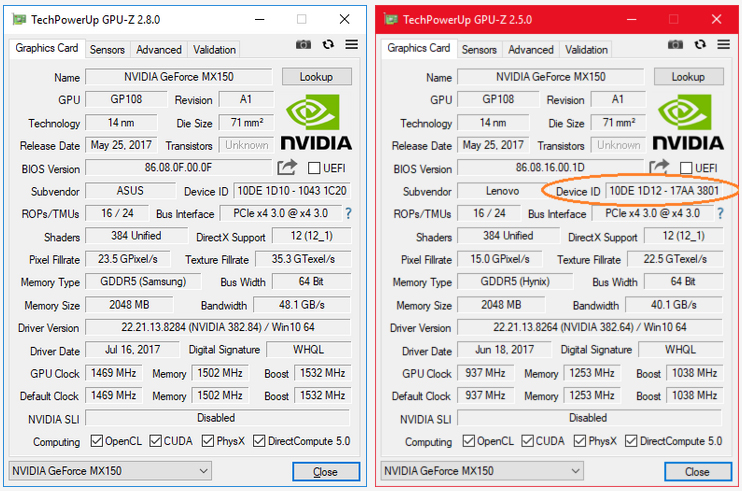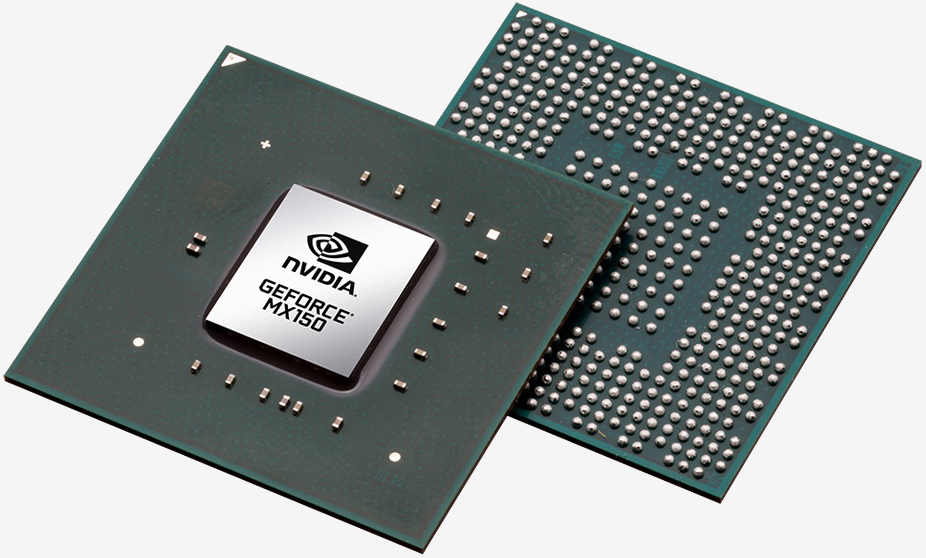Evidence has surfaced suggesting Nvidia is feeding OEMs two different versions of its MX150 mobile GPU, one of which offers significantly reduced performance.
NotebookCheck says it recently discovered two distinct versions of the discrete GPU. The MX150 'N17S-LG-A1' (also called the 1D12) is described as essentially being a Max-Q version of the standard MX150. It has only been found in 13-inch Ultrabooks thus far. The standard version is identified as the 'N17S-G1-A1' (or '1D10').
The site recounts that its first MX150-equipped machine, the MSI PL62, exhibited a GPU with a core clock of 1,469MHz, a Boost clock of 1,532MHz and VRAM speeds of 1,502MHz. These speeds were also seen on the MX150 inside the Asus Zenbook UX430UN. In contrast, the MX150 inside the Lenovo IdeaPad 320S-13KBR boasts a core clock of 937MHz, a Boost clock of 1,038MHz and memory speeds of 1,253MHz - much slower across the board.

NotebookCheck says it has spotted the slower graphics in other systems as well including the ZenBook 13 UX331UN, Xiaomi Mi Notebook Air 13.3, HP Envy 13 and the ZenBook UX331UA. According to the site, the slower-clocked solutions afford a performance drop of as much as 25 percent in some tests.
The issue isn't so much that Nvidia is shipping two different versions of the MX150 but that it has failed to mention as much in marketing materials.
The "original" MX150 has a TDP of 25W versus the 10W TDP exhibited by the slower variant. Obviously, a less power-hungry chip is going to be a better fit for thin and light machines... like 13" Ultrabooks.
We reached out to Nvidia and received the following statement on the matter:
The MX150 is a Pascal-based GPU featuring 384 CUDA cores. We work closely with OEM partners to optimize their specific design constraints for things such as TDP, battery capacity, CPU speed and more. Overall performance and specifications will vary based on OEM implementation and design considerations.
